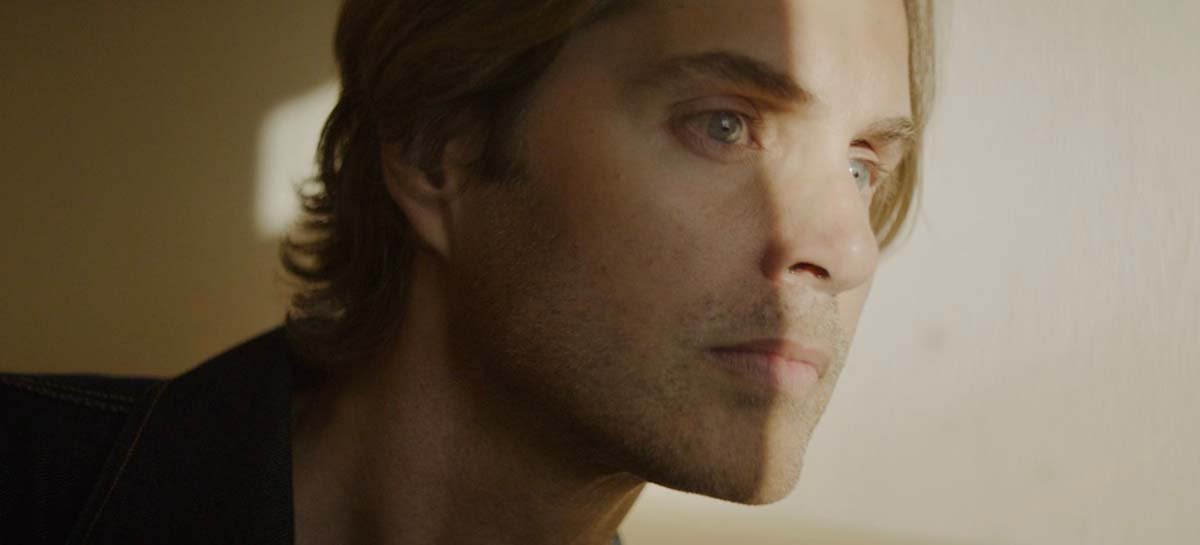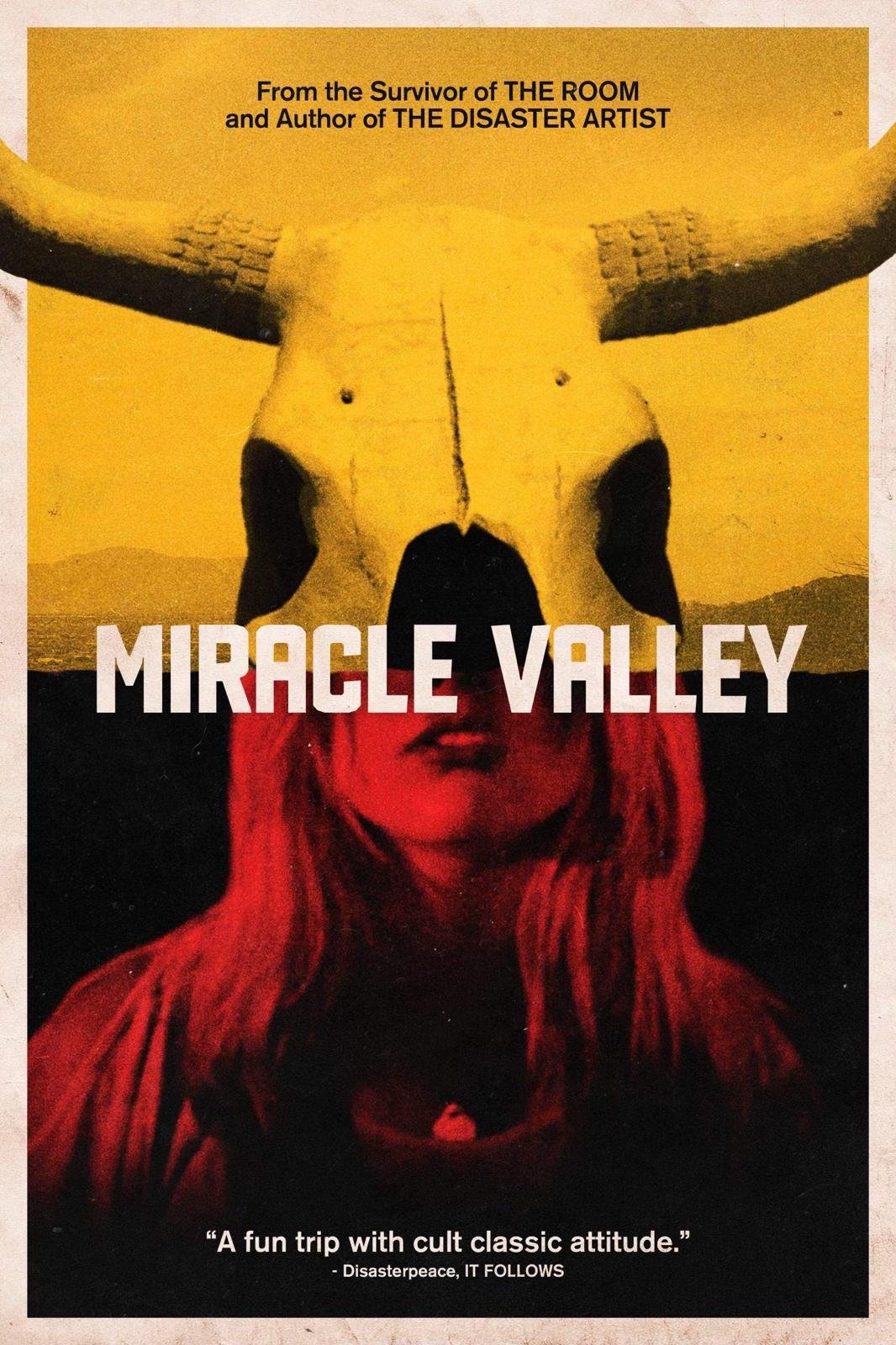Greg Sestero takes a bold turn into '70s and '80s horror homage at the Rio Grind Film Festival
Miracle Valley is the latest stop on The Room actor-director’s strange and confounding journey
Greg Sestero builds dread in Miracle Valley.
The Rio Grind Film Festival runs November 25 to 28. Miracle Valley screens November 26, with a Q&A appearance with Greg Sestero, starting at 6:30 pm.
GREG SESTERO’s career arc is bonkers, perfectly embodying the axiom that the fringe is always more interesting than the middle. He could have been a reliably bland Hollywood beefcake making solid but forgettable films like Josh Hartnett, with whom Sestero once shared an agent. Instead, as a struggling young actor and former model, he bumped into Tommy Wiseau and co-starred in The Room, potentially sealing his fate as no more than a handsome footnote in cult movie history. But Sestero turned his experiences as Wiseau’s Room-mate into a wickedly entertaining book, 2013’s The Disaster Artist, which later became the 2017 James Franco/Seth Rogen film, which in turn put him in unfeasibly close proximity to an Oscar. With admirable grit, Sestero had travelled a long, long way from “Oh hi, Mark.” And it still wasn’t enough!
“The ultimate dream for me when I was writing The Disaster Artist was that it would be turned into an award-winning film,” Sestero tells Stir during a call from San Francisco. “And guess what? It happened. And it was sorta liberating because it’s not what you think. You learn quickly that the joy comes from writing the film, making the film, and meeting that challenge. That’s where the love is. Just thinking: ‘I’m gonna win an award and then I’m gonna be complete’—it doesn’t work that way.”
Which brings us to the latest episode in the man’s endearingly strange and confounding journey. Almost eight years to the day that James Franco caught a promotional appearance at the Rio Theatre and promptly set about optioning his book, Sestero returns to Vancouver with Miracle Valley, an homage to ’70s/’80s horror that marks his debut as a fully fledged writer-director, arriving at the Rio Grind Festival on Friday (November 26). We can sense Sestero’s affection for the genre from the opening frames of the film, when a character is abducted from a lonely street somewhere in Arizona’s high desert. From there, Miracle Valley unfolds as a tale of rural cults, sacred bloodlines, and pleasingly visceral practical effects. But there’s more going on here, and it’s hard to ignore the understatement when Sestero remarks: “I have this bizarre talent for finding very peculiar characters.” In this case, he continues, “Miracle Valley was kind of an ode to my good buddy Rick Edwards, because he’s such a larger than life character. You try to cast that part? It could easily fall flat.”
Playing the character of Father Jake, Edwards is, in fact, a ferocious mixture of menace, physicality, and charisma, and he validates Sestero’s instincts by utterly dominating the film. In a subtler way, Edwards also reflects something about Sestero himself. They’ve been friends for 20 years, he says, “and I grew up watching him on a soap opera as a kid.” The parallel is interesting: like Sestero, Edwards was a hunk who bounced between American TV and European film while carving an eccentric career on the outskirts of the mainstream.
One senses that, in general, Sestero has accumulated a lot of goodwill. “I have more people in my corner now to make better films,” he says. Also joining the gang is Tom Franco, brother to James and Dave, who, in addition to co-producing Miracle Valley, also takes a small but memorable role in the film. And like Sestero and Edwards, Franco appears to be pursuing his own devoutly stubborn path with a resume that starts in 1990 with, amazingly, Frank Henenlotter’s Basket Case 2. (He was 10 at the time.) Sestero chuckles knowingly. “He’s a gem,” he says. “You put him on set and he just calms the entire process. He’s a phenomenal artist. He’s actually touring an art show across the country right now in a school bus. Pretty fascinating. Great to work with, great sense of humour, just really good vibes.”
Evidently, and in spite of Arizona’s brutal nighttime cold, ants, and scorpions—not to mention the vicious subject matter—Sestero ran a happy set filled with good vibes, slipping comfortably into his new role. He heaps praise on his cast and crew, especially DP Matthew Halla, who helped the fledging director capture the dread and isolation we remember from Hills Have Eyes or Jack Starrett’s 1975 drive-in classic Race with the Devil, two of the films namechecked by the filmmaker during our call. After years of being directed by others, for better or worse, the experience also gave Sestero a new angle on his job in front of the camera. “I was in New York with this film critic I’ve known for a while, and he was, like, ‘That’s the best work I’ve seen you do by far.’ It’s funny because it’s the first time I didn’t invest actor mentality into my performance. I was watching out for everybody else.”
In fairness, Sestero just happens to be burdened with more preconceptions than most, whether he was being trundled off to auditions he didn’t care about (“Why do I really wanna be in this? Just so I can say that I’m in something?”), or as a co-conspirator to Tommy Wiseau (“You had to fight your way out of The Room. You had to fight, you had to emerge, you had to offer something other than being in a bad movie people love to watch.”) The real Greg Sestero is a driven, movie-drunk creature who wrote a screenplay called Home Alone: Lost in Disney World when he was 12-years-old, sent it to John Hughes, and actually received a letter in reply. As if anything could stop him now.















